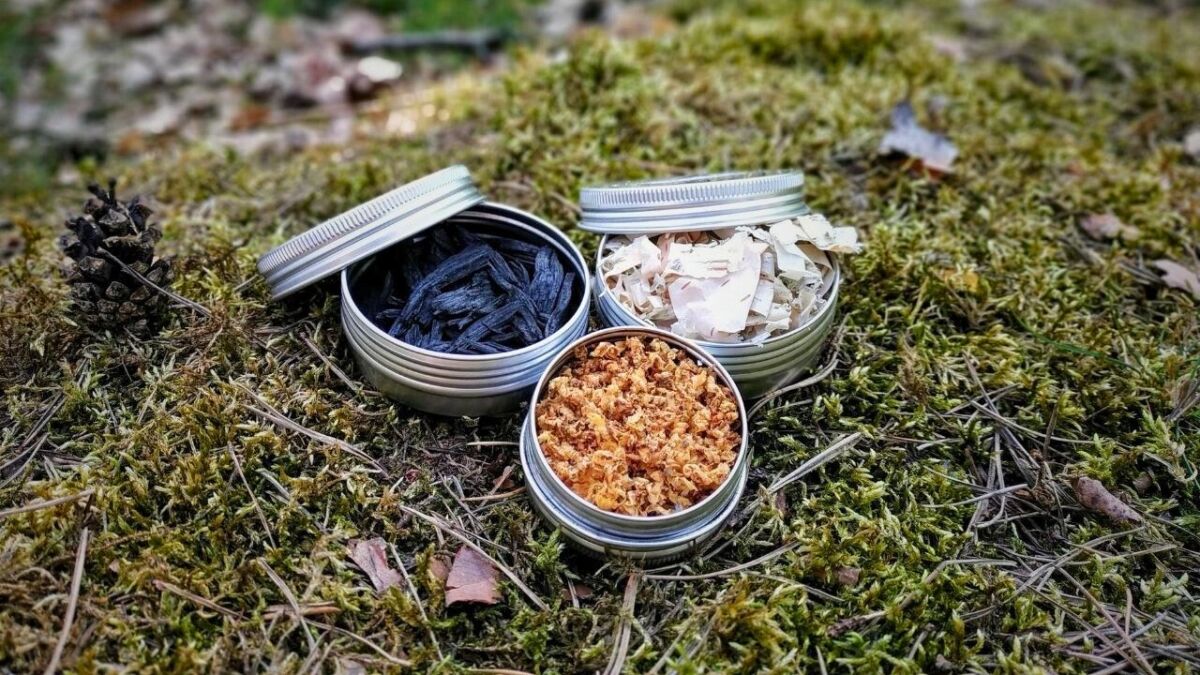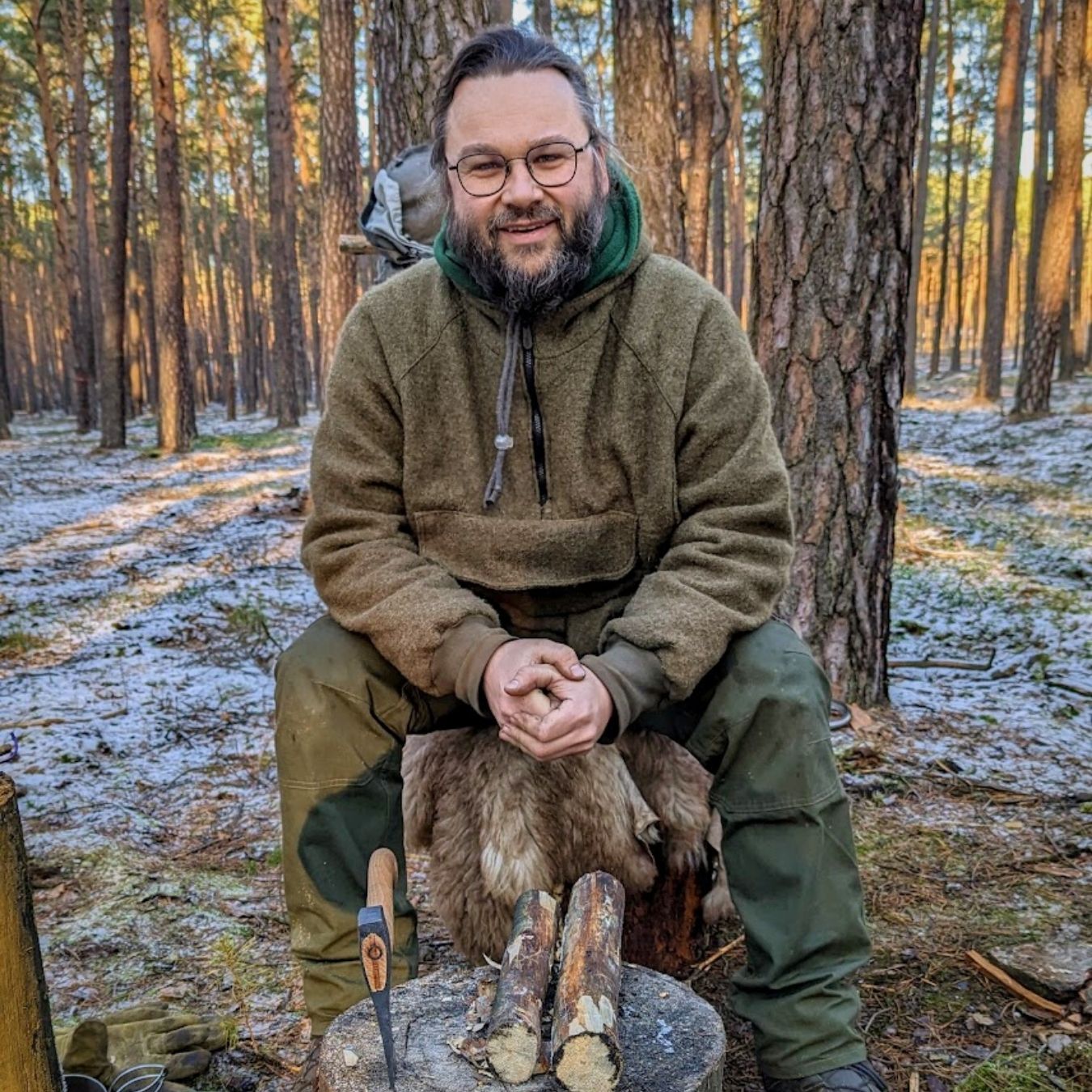
Tinder
Noun
Meaning
Tinder is a crucial element in the world of survival, bushcraft, and outdoor activities. It refers to highly flammable material used to start a fire. In the context of survival, tinder is essential for creating a flame and igniting larger fuel sources. It can be found in nature, such as dry leaves, grass, or bark, or can be carried as a prepared material, like cotton balls soaked in petroleum jelly. Having reliable tinder is vital for staying warm, cooking food, and signaling for help in emergency situations. Mastering the art of finding and preparing tinder is a fundamental skill for any outdoor enthusiast.

Examples
„I love using tinder to start a fire when I'm out in the wilderness. It's so easy to find dry twigs and leaves to use as tinder.“
„My friend taught me a great trick for making tinder out of birch bark. It burns really well and lasts a long time.“
„When I went camping last weekend, I forgot to bring tinder with me. Luckily, I found some dried grass and used it to start my fire.“
„I always make sure to gather plenty of tinder before I go on a camping trip. It's the key to getting a fire started quickly and easily.“
„I recently learned how to make char cloth, which is a great tinder material. It catches a spark easily and burns slowly, making it perfect for starting fires.“
„I love going out into the wilderness and practicing bushcraft skills. One of the most important things to have in your survival kit is tinder.“
„When I go camping, I always make sure to gather some dry leaves and twigs to use as tinder for starting a fire.“
„My friend and I were hiking in the mountains when it started to rain. We quickly gathered some tinder to help us start a fire and stay warm.“
„During a survival training course, we learned how to identify different types of tinder in the wild, such as birch bark and cattail fluff.“
„When I was stranded in the woods after getting lost, I used some shredded paper as tinder to start a fire and signal for help.“
„Having a reliable source of tinder is essential for any survival situation, as it can mean the difference between staying warm and safe or being exposed to the elements.“
Origin
The word "tinder" originates from the Old English word "tynder," which can be traced back to the Old Norse word "tundr." The term "tinder" refers to a highly flammable material that is used to start a fire. In its original form, tinder was typically made from dry, fibrous materials such as dried grass, leaves, or bark.
Throughout history, tinder has played a crucial role in survival and fire-making techniques. It has been used by various cultures around the world to create sparks and ignite fires. In ancient times, people would use flint and steel to strike against a piece of tinder, creating sparks that would catch the tinder on fire.
With advancements in technology, the use of tinder has evolved. Today, there are various types of tinder available, including natural materials like birch bark, char cloth, and fatwood, as well as synthetic options like cotton balls soaked in petroleum jelly or commercial fire starters.
Tinder is an essential component of bushcraft and survival skills, as it provides the initial flame needed to start a fire. It is lightweight, compact, and easily ignitable, making it a valuable resource in outdoor situations where fire is necessary for warmth, cooking, and signaling for help.
Synonyms
Kindling, Firestarter, Firewood, Fuel, Ignition material, Fire starter, Fire tinder, Fire fuel
Antonyms
Dampened, Dampish, Wet, Damp, Moist, Sodden, Soaked, Drenched, Waterlogged, Saturated
Relatives
Firewood, Fire starter, Flammable material, Ignition, Spark, Campfire, Fire-making, Firestarter, Kindling, Flint and steel, Char cloth, Fire piston, Firesteel, Bow drill, Fire making
Historical and cultural importance
Tinder has a long history of being used as a crucial tool for survival and fire-making. Throughout human history, people have relied on tinder to start fires for warmth, cooking, and protection. In ancient times, tinder was made from various materials such as dry grass, leaves, and bark. It was carefully collected and stored, as it was essential for survival in the wilderness.
Not only does tinder have a practical purpose, but it also holds cultural significance in many societies. In indigenous cultures around the world, the knowledge of finding and preparing tinder is passed down from generation to generation. It is often seen as a skill that connects people to their ancestral roots and teaches them about the natural world.
In addition to its historical and cultural relevance, tinder plays a vital role in the practice of bushcraft and survival skills. Knowing how to identify and gather suitable tinder materials is a fundamental skill for anyone venturing into the wilderness. It requires an understanding of the local environment, the ability to recognize different types of tinder, and the knowledge of how to prepare it for fire-making.
Today, tinder is still used by outdoor enthusiasts, survivalists, and bushcraft practitioners. While modern alternatives like fire starters and lighters exist, many people still appreciate the traditional method of using natural tinder. It not only provides a sense of connection to nature but also serves as a reminder of our ancestors' resourcefulness and ingenuity.
More information about the term Tinder
Tinder: The Essential Fire Starter
Tinder is a crucial element when it comes to starting a fire in the wilderness. It refers to the easily ignitable material that is used to catch a spark or flame and ignite the larger fuel sources. In the world of survival and bushcraft, having reliable tinder can mean the difference between warmth, safety, and a cold, uncomfortable night.
Types of Tinder
There are various types of tinder that can be found in nature or created from available resources. Understanding the different options and their properties is essential for successful fire starting:
Natural Tinder: Natural tinder can be found in the wild and includes materials such as dry grass, leaves, bark, and pine needles. These materials are often dry and easily combustible, making them excellent choices for starting a fire.
Fungal Tinder: Certain types of fungi, such as chaga or birch polypore, can be used as tinder. These fungi have a fibrous texture that easily catches a spark and burns slowly, providing a longer-lasting flame.
Char Cloth: Char cloth is a material created by charring a piece of cotton fabric in a controlled environment. It is highly flammable and catches a spark easily, making it a popular choice among survivalists.
Feather Sticks: Feather sticks are created by shaving thin curls of wood from a stick. The resulting feather-like shavings catch fire quickly and can be used as tinder to ignite larger fuel sources.
Preparing Tinder
While some tinder can be found in nature, it is often necessary to prepare it to ensure its effectiveness. Here are a few methods for preparing tinder:
Drying: If you come across natural tinder that is slightly damp, you can dry it out by placing it near a heat source or using your body heat. Dry tinder catches fire more easily and burns more efficiently.
Processing: Processing tinder involves breaking it down into finer pieces, increasing its surface area and making it easier to ignite. This can be done by tearing apart dry grass or leaves or using a knife to create feather sticks.
Char Cloth: To create char cloth, cut a piece of cotton fabric into small squares and place them in a metal container with a small hole in the lid. Heat the container over a fire until smoke stops coming out of the hole. The resulting char cloth can be used as highly effective tinder.
Using Tinder
Once you have prepared your tinder, it's time to use it to start a fire. Here's a step-by-step guide:
1. Gather your tinder, kindling, and fuel wood.
2. Create a small nest or bundle with your tinder, leaving a small opening in the center.
3. Use a fire starter, such as a ferro rod or matches, to create a spark or flame.
4. Direct the spark or flame into the opening of the tinder bundle.
5. Gently blow on the tinder to encourage the flame to spread.
6. Once the tinder is burning steadily, carefully add small twigs and sticks to build up the fire.
7. Gradually add larger fuel wood as the fire grows.
Remember to always practice fire safety and ensure you have a sufficient water source nearby to extinguish the fire if needed.
Tinder is an essential tool for any survivalist or outdoor enthusiast. By understanding the different types of tinder, how to prepare it, and how to use it effectively, you can increase your chances of successfully starting a fire in any situation.
Back to overview

